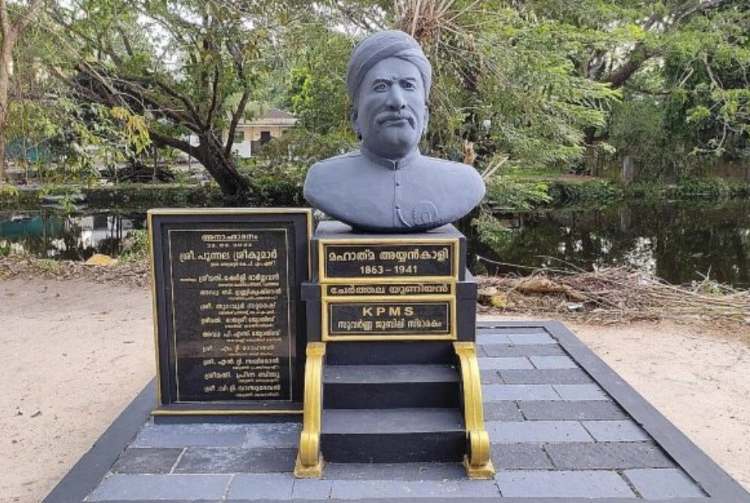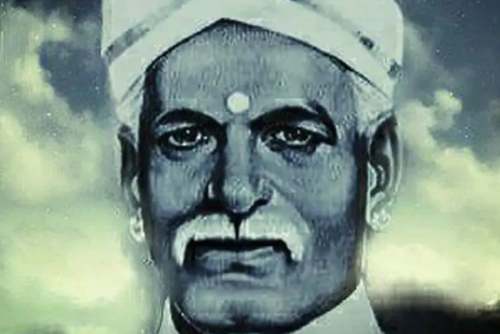
In India’s long and unfinished journey toward democracy, certain leaders stand out not only for their defiance of social hierarchies but for their ability to redefine the very meaning of the “public.” Mahatma Ayyankali, born in 1863 into a subaltern caste in Travancore, belongs firmly in this lineage. His struggles were not only about immediate rights – roads, schools, wages, or dress – but about forcing a society built on exclusion to confront the question of who belongs in public life. In doing so, he laid the foundations of what can be called subaltern public spheres and subaltern public policies, concepts that sound abstract in theory but were lived realities in Ayyankali’s practice.
The “public sphere,” as theorised by Jürgen Habermas in his seminal work, refers to the space where citizens gather to deliberate, debate, and shape opinion. In his idealised version, it is a domain of rational discussion, free of domination, where all voices can, in principle, be heard. However, history shows that this openness was largely illusory. Women, racial minorities, the working poor, and oppressed castes were rarely, if ever, granted entry. As Nancy Fraser has argued, what emerged instead were subaltern Counterpublics, parallel spaces where the excluded formed their own collective voices and strategies.
READ I India’s semiconductor industry faces global reality check
Ayyankali and the making of subaltern semocracy
From this insight flows the idea of subaltern public policy, not simply reforms handed down from above, but policies and practices born from the struggles, demands, and lived experiences of the marginalised. These are not exclusive enclaves meant for subalterns alone. Rather, they are mechanisms to democratise governance by widening the scope of participation and dismantling entrenched hierarchies. Subaltern public spheres and policies, in short, are about inclusion, not separatism. They remind us that true democracy grows when those historically kept out of public life force their way in and, in doing so, remake the public itself.

It is in this context that Ayyankali’s life and struggles become so significant. Around the beginning of the twentieth century, everyday life in Kerala was defined by sharp caste boundaries. Dalit communities were denied the right to use public roads, excluded from schools, and shut out of temples. Pulayar women were not allowed the dignity of covering their upper bodies, while Dalit workers were forced into degrading and servile forms of labour. This was not merely discrimination. Rather it was a structure of invisibility, designed to strip an entire community of dignity and presence.
Dalit rights and everyday struggles
Ayyankali refused to accept this fate. Among his first and most powerful protests was the villu vandi, or ox-cart, ride. In those times, carts were a symbol of privilege, associated with landlords and the elite, and Dalits were not permitted to own or drive them along certain routes. By buying a cart and deliberately traveling down these restricted roads, Ayyankali was not merely moving from one place to another. Rather he was making a bold declaration that his community had the right to be seen and recognised in public life. The backlash was swift and violent, including the Chaliyar riots of 1893–94, when upper-caste groups attacked him. However, the act swelled widely and a simple ride had become a radical declaration of dignity.

What is striking about this moment is how it captures the essence of subaltern public policy. Ayyankali was not appealing to rulers for benevolence. In fact, he was crafting a new practice of citizenship from below. By riding the cart, he legislated through defiance, compelling recognition of rights that law and custom denied. Resistance itself became a mode of policymaking.
Ayyankali’s genius, however, was not limited to symbolic acts. He understood the power of organisation. In 1907, Ayyankali established the Sadhu Jana Paripalana Sangham (SJPS), which became one of the earliest large-scale associations formed by Dalits in Kerala. Through this platform, he pressed for schooling for Dalit children, demanded fair pay and humane working conditions for farm labourers, and sought safeguards against the violence his community routinely faced. This was an extraordinary development – a community long treated as voiceless was now building an institution to speak, plan, and demand. The Sangham became a crucible of subaltern policymaking, a forum where Dalits articulated their needs and translated them into collective action.
The results were tangible. By 1900, restrictions on Dalits using public roads were loosened. Over time, these struggles led to concrete changes. By the start of the 20th century, Dalits were gradually allowed to use public roads. A decade later, despite strong opposition, children from these communities began entering schools.
Ayyankali also organised farm workers into strikes, which eventually compelled landlords to improve wages and working conditions. These were not gifts from above, but were won through struggles. The landmark Temple Entry Proclamation of 1936, often portrayed as a royal gesture, cannot be understood without acknowledging the decades of relentless agitation led by leaders like Ayyankali.
What also marked his leadership was his attention to caste and gender, as they are structurally linked. When Ayyankali fought for Dalit women’s right to cover their upper bodies, the issue went far beyond clothing. It was a demand for self-respect and bodily autonomy in a system that sought to deny them even the most basic forms of dignity. By fighting this, Ayyankali made clear that social justice could not be partial, rather it had to take in the whole human being.
Placed against a wider canvas, Ayyankali’s interventions reflect other global struggles. In the United States, Rosa Parks refused to vacate her seat on a segregated bus in Montgomery, turning an ordinary act of travel into a statement of equal citizenship. In South Africa, anti-apartheid activists resisted the brutal system of racial segregation through grassroots campaigns that created alternative publics under repressive conditions.
In western India, B.R. Ambedkar led temple-entry agitations and fought for education, reaffirming Ayyankali’s insistence that dignity must be claimed in spaces of learning and worship. Across Brazil, Black and Indigenous movements forged cultural and political counterpublics that contested their exclusion from national life. These struggles and resistance remind us that Ayyankali’s movement, though rooted in Kerala’s soil, belongs to a global tradition of oppressed peoples transforming exclusion into new visions of democracy.
Subaltern public policy and democratic inclusion
Seen this way, the significance of Ayyankali’s life lies not only in what he achieved for Kerala’s Dalits but in how he redefined the tone and tenor of public life itself. His interventions worked on two levels. First, he fought for material rights: the right to roads, schools, wages, bodily dignity. Second, he created institutions, like the SJPS, that enabled Dalits to articulate their own voice and agenda, independent of dominant castes or the state. Together, these efforts created a subaltern public sphere and laid the groundwork for subaltern public policy in Kerala.
The lesson his life offers is clear. Democracy cannot thrive if it depends solely on elite institutions or assumes a single, unified public sphere. It requires the constant flourishing of counterpublics, of voices that have been silenced, of policies shaped by those at the margins. Ayyankali’s story tells us that dignity is not granted but claimed, and that justice is not the privilege of a few but the inheritance of all.
For contemporary India, and indeed for the world, this has immense significance. Public spaces today are still contested by caste, class, race, and gender hierarchies. Marginalised communities continue to demand recognition and access, whether in universities, legislatures, or workplaces. The challenge is to ensure that the “public” is not a narrow club but a truly inclusive space. Revisiting Ayyankali helps us remember that democracy is not only about institutions of the state but about who is seen, who is heard, and who belongs.
Ayyankali’s villu vandi protest was never just about an ox-cart on a forbidden road. It was about transforming invisibility into presence, subordination into dignity, and exclusion into citizenship. His legacy is not provincial or local, but significantly universal. It shows us that the most radical reimagining of democracy often comes not from parliaments or courts, but from those who have been denied entry into the public realm yet insist on claiming it anyway. Ayyankali’s life, therefore, is not only Kerala’s history, but it is a milestone in the world’s ongoing struggle for an inclusive and just public.
Dr KM Seethi is Director, Inter University Centre for Social Science Research and Extension (IUCSSRE), Mahatma Gandhi University (MGU), Kerala, India. Seethi also served as Senior Professor of International Relations, Dean of Social Sciences at MGU and ICSSR Senior Fellow.

